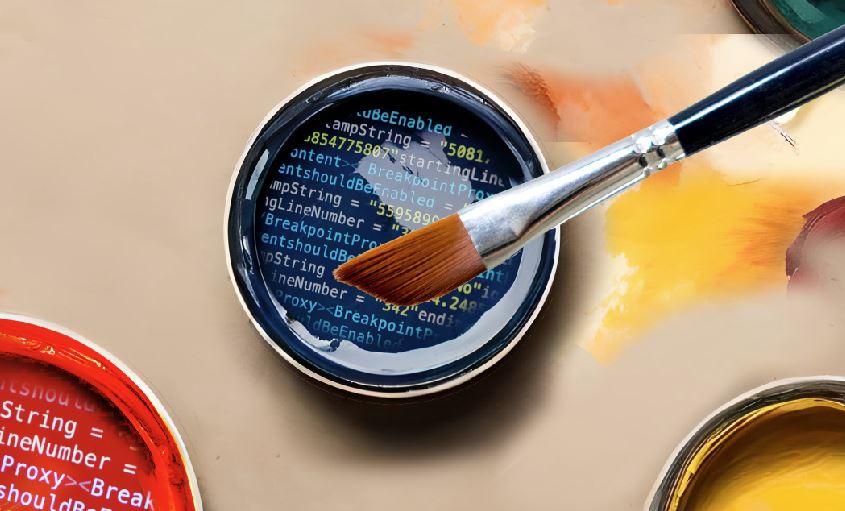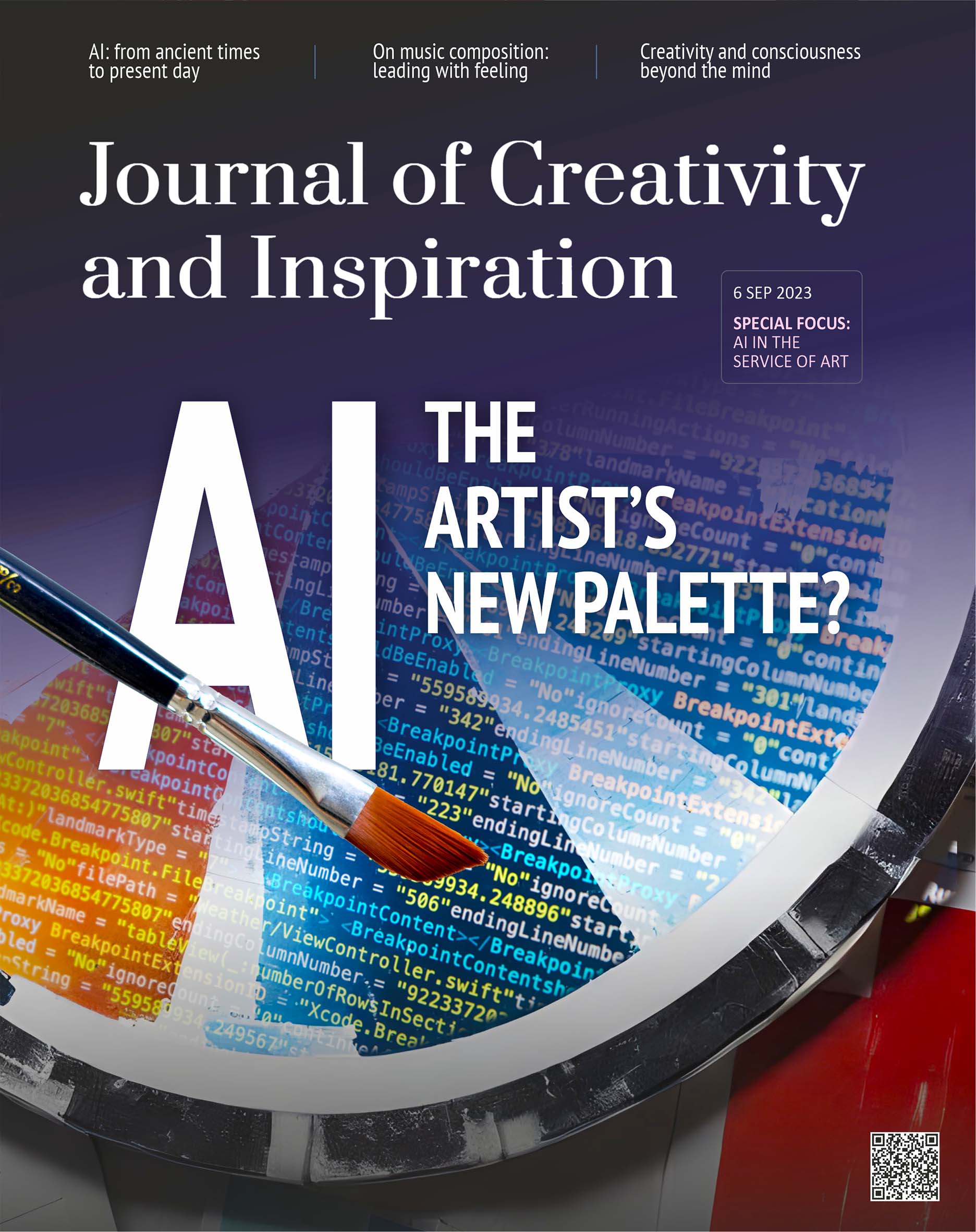EDITORIAL
Artificial Intelligence in the service of art
6 September 2023 – Vol 1, Issue 1.
Artists have continuously pushed the boundaries of their craft, finding inspiration in the world outside and inside them. Today, as artificial intelligence (AI) enters artistic expression, another boundary is being pushed – that of creativity itself. Can images that are generated by AI, be seen as genuine creativity? And can AI support artists in their work, or threaten to replace them? As with any disruptive new technology, some people welcome AI with excitement while others, with apprehension.
The concept of AI is not new. It can be traced back to ancient Greece, with the mythological story of Talos, the bronze automaton. Interestingly, the story of Talos was in itself a product of human imagination and artistic creativity – a story about a machine in the service of humanity, written by the best writers of the time. But, how can AI serve artists and humanity at large? To what extent can machine learning algorithms support human creativity?

Algorithms are the new art palette? Image: Gil Dekel, AI, Alexander Sinn and Artiom Vallat, 2023.
The digital power that drives AI systems is algorithms. These algorithms were trained on vast datasets of images and words, so they can act as sets of instructions that orchestrate data into patterns. AI can also attempt to mimic patterns of artistic styles, creating digital paintings that echo the strokes of renowned artists. As AI generates art, it blurs the lines between human and machine creation, raising fundamental ethical concerns about authorship, originality, and the essence of artistic intention.[1]
Luckily, AI cannot replicate two fundamental traits that inspire art: human emotion and human experience. The artist’s journey of creation is infused with personal experiences, cultural contexts, and introspection, and these remain uniquely human. The triumphs in one’s life, the imperfections, the mistakes – these make life unpredictable which in turn is the source of breakthroughs and revelations. Can AI, with its seemingly vast amount of information and quick processing capacity, emulate such creative unpredictability, or will it strive to achieve perfection?
Since AI does not have emotions or life experience, it cannot replace artists. Moreso, it does not have an opinion and does not have anything to say. AI has no statements it wishes to share with the world. But perhaps it can be used in support of artists, and in guiding people towards creative outputs.
The narrative of AI in art, as explored in this issue, is not one of binary opposition, but rather of symbiosis. Artists can learn to use AI in their service, as Renaissance painters used apprentices to work on their masterpieces. Instead of brush and paint, AI uses algorithms and data. AI, in the service of humanity, can open exciting new opportunities for creative expression. Just as past innovations expanded the artist’s toolkit, AI can be seen as yet another tool in this ongoing evolution of art.
The introduction of photography and later Photoshop, for example, did not lead to the demise of painting but rather enriched the visual language of art. For AI to enrich our visual language, we need to think not only about the technology itself but about how and why we choose to use it. Would artists have the inclination to embrace this so-called digital assistant (sometimes promoted as a ‘digital muse’), or would they retreat from digital interventions, trying to rekindle an even deeper connection with the personal and humane side of life?
Other topics covered in this issue are: the creative consciousness, the concept of beauty, light perception (colour illusions), and reflections from artists on processes in dance, paintings, and music creation.
Notes
[1] We must note that at the moment AI is limited to creating images at a certain resolution which is good for screen, but not so for a large print. Yet, this may change in the future.
Gil Dekel is the founding editor of the Journal of Creativity and Inspiration. He is doctor in Art, Design and Media.
